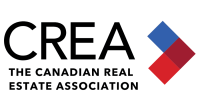Our corporate offices and customer solutions center will be closed December 24-25, reopening on December 26.
The CCIM Institute Foundation: Building Resilience
The first Tenant Resiliency Index (TRI) in 2021, funded by the Robert L. Ward Fund of The CCIM Institute Foundation, was prompted by the pandemic and its potential long-term impacts on commercial real estate. The impetus was to provide an accurate risk tenant analysis that went beyond credit scores and financial records due to the disruptions fueled by COVID-19 and numerous tenants shutting down.
The TRI survey highlighted the different effects of the pandemic across industries (primarily office and retail), and tenant types, and particularly around remote work viability.
Now part two of the TRI survey is complete, and the results are in. The survey was again directed by The CCIM Institute Foundation and under the guidance of researcher Brent Smith, Ph.D., Endowed Chair at Virginia Commonwealth University. Following minor adjustments to the weighting process, TRI 2 was distributed to The CCIM Institute's members for input and testing. The beta test included 35 members.
The primary goal was to assess whether the index has value as a dynamic measurement tool for gauging tenant risk beyond major crises like the pandemic.
Smith explains, "The purpose of the second phase was to determine whether this can explain tenant resiliency beyond extreme events like a pandemic, major recession, or financial crisis." “What can it tell us? The idea was to create something that would have a dynamic story to it, and we could see trends over time.”
Smith didn’t alter any questions from the first TRI to gauge how responses changed from the “pandemic world” to a “recovery world.” Results indicated that the TRI survey has potential to provide valuable insights if ongoing data is available.
For example, the new survey assessed variations in tenant resiliency as interest rates rose. Industries with stronger debt needs, for instance, may see more challenges in staying power and location.
Major Finding Around Remote Work
In the first survey, remote work was perceived as a threat to the stability of leases. “However, the story about working remotely completely turned on its head in the new survey,” explains Smith.
There was concern about tenant resiliency during COVID-19 for firms that were nimbler in allowing employees to work remotely and their ability to continue to service their leases.
“That seems to have gone away, because the correlation between a threat for vacancy and remote work wasn't present in this survey,” says Smith. “Entities have started to dial in who's going to work where, so those threats are reduced.”
More Changes in Survey Results
In the original survey, there was consternation around tenants in food service and retail consumer goods. The new TRI score by tenant type shows virtually no concern in those categories. However, there’s unease in consumer services, and interestingly, computer and engineering, says Smith.
“That wasn't the case in 2021. That’s an example of dynamic frictions in these different industries and their ability to service their leases,” notes Smith.
Meanwhile, some responses around resiliency remained consistent from 2021, Smith says, including the importance of a tenant’s financial condition and tenure, economics of the area, and whether it’s the tenant’s primary location.






